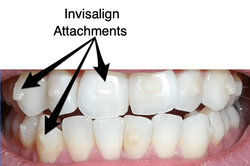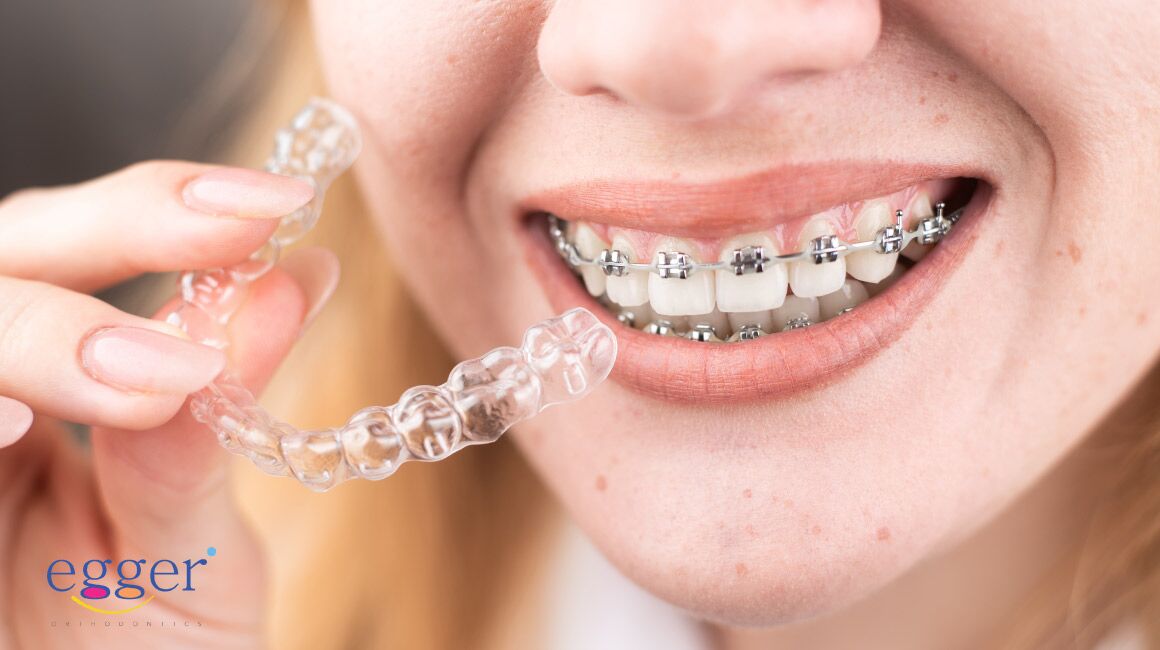Invisalign for Teens: A Modern Solution to Straightening Young Smiles
Invisalign for Teens: A Modern Solution to Straightening Young Smiles
Blog Article
Invisalign vs. Traditional Braces: Which Option Is Right for You?
When considering orthodontic therapy, the option in between Invisalign and standard dental braces provides several crucial elements that merit mindful examination. Invisalign provides a discreet choice with detachable aligners, while standard dental braces supply a much more noticeable yet efficient service for severe imbalance.
Review of Treatment Alternatives

On the other hand, standard braces include steel brackets and wires that are bound to the teeth. This approach applies continual pressure in time to attain positioning. While reliable for complicated orthodontic concerns, standard braces require routine sees for modifications and can posture challenges in keeping dental hygiene due to the trouble of cleaning about brackets and cables.
Both choices have their benefits, and the selection frequently rests on specific oral problems, way of life choices, and client conformity. Inevitably, speaking with an orthodontic professional is vital for establishing one of the most suitable treatment strategy customized to individual requirements. Recognizing the subtleties of each option can substantially influence the overall success of orthodontic treatment.
Aesthetic Considerations
A significant variable influencing the selection in between Invisalign and standard braces is the visual appeal each treatment uses. Invisalign aligners are crafted from clear plastic, making them basically invisible when worn. This very discreet look is particularly interesting grownups and young adults who might really feel awkward concerning their orthodontic therapy. The ability to maintain a natural smile throughout the positioning process can substantially enhance the individual's self-confidence in social and specialist settings.
On the other hand, traditional dental braces are composed of steel brackets and wires, which can be a lot more recognizable. While improvements in orthodontic technology have resulted in the growth of smaller sized brackets and tinted elastics, standard braces still maintain an even more conspicuous account. For some people, the exposure of braces might discourage them from looking for needed therapy.
Ultimately, the selection between Invisalign and typical braces might hinge on personal preferences regarding aesthetic appeals. Individuals who focus on discretion commonly favor Invisalign, while those who are less worried concerning visibility might select typical braces. Understanding the aesthetic implications of each alternative is crucial for making an educated decision that straightens with one's lifestyle and preferences.
Convenience and Convenience

In terms of benefit, Invisalign aligners are removable, allowing people to appreciate their favorite foods without limitation and preserve ideal dental health. Cleaning and flossing are streamlined, as the aligners can be taken out during these regimens, whereas standard dental braces need cautious navigating around brackets and wires.
In addition, Invisalign's dynamic system permits less orthodontic visits. Patients generally receive multiple sets of aligners at the same time, which can enhance the therapy procedure and lower time invested in the orthodontist's chair. On the other hand, typical dental braces necessitate normal changes, making them much less convenient for those with hectic schedules. Invisalign. Generally, the convenience and ease of Invisalign make it an appealing choice for many individuals seeking orthodontic treatment.
Therapy Duration and Performance
While both Invisalign and standard braces work in dealing with dental imbalances, the duration of therapy can vary dramatically in between the two alternatives. Commonly, Invisalign treatment can take anywhere from 12 to 18 months, relying on the complexity of the situation. The clear aligners work by progressively shifting teeth into their wanted settings, and regular follow-ups with an orthodontist assistance ensure development remains check my site on track.
On the other hand, conventional dental braces usually need a longer dedication, normally ranging from 18 months to 3 years. This is because of their fixed nature and the usage of brackets and wires, which can be much more reliable for severe imbalances and complicated cases (Invisalign). The treatment performance of standard braces is well-documented, as they enable for exact changes and greater control over tooth motion
Inevitably, the choice between Invisalign and standard dental braces might rest on both the anticipated therapy duration and the particular oral problems available. Consulting with an orthodontist is critical, as they can offer tailored referrals based upon specific demands, ensuring the chosen technique lines up with preferred end results and durations.
Cost Comparison and Insurance Coverage Alternatives
Price plays a significant function in the decision-making process for people taking into consideration orthodontic therapy, whether selecting Invisalign or traditional braces. Typically, the price of Invisalign arrays from $3,000 to $8,000, while conventional dental braces commonly cost between $2,000 and $6,000. Aspects affecting these prices consist of the complexity of the situation, the duration of treatment, and geographical place.
Many oral insurance coverage plans supply partial coverage for orthodontic therapies, but the specifics can vary widely. Generally, typical braces may be more frequently covered by insurance plans contrasted to Invisalign, which some insurers categorize as an aesthetic procedure.
In addition, numerous orthodontic techniques provide versatile layaway plan, making both therapy alternatives more easily accessible. People need to make inquiries about potential financing options and discounts for upfront payments. Assessing the overall expense, consisting of insurance coverage advantages and repayment strategies, is important for making an educated choice that aligns with both visual preferences and budget factors to consider.

Final Thought
In recap, the selection in between Invisalign and conventional braces pivots on multiple factors, consisting of aesthetic choices, comfort, treatment period, he said and cost. Invisalign offers a very discreet, removable choice that helps with dental hygiene and nutritional versatility, while traditional braces might be better for complicated oral problems and typically come at a lower cost point. Eventually, assessment with an orthodontist is essential to assess specific situations and establish one of the most ideal therapy alternative for achieving optimal oral positioning.
When considering orthodontic therapy, the option between Invisalign and traditional dental braces provides several crucial aspects that merit careful assessment.Contrasting Invisalign and typical dental braces reveals distinctive therapy choices for orthodontic correction.While both Invisalign and traditional braces are effective in fixing oral imbalances, the period of treatment can differ dramatically in between the two choices.Expense plays a significant role in the decision-making procedure for people taking into consideration orthodontic therapy, whether choosing for Invisalign or standard braces.In recap, the choice between Invisalign and standard check this braces hinges on several factors, consisting of visual preferences, comfort, treatment period, and price.
Report this page